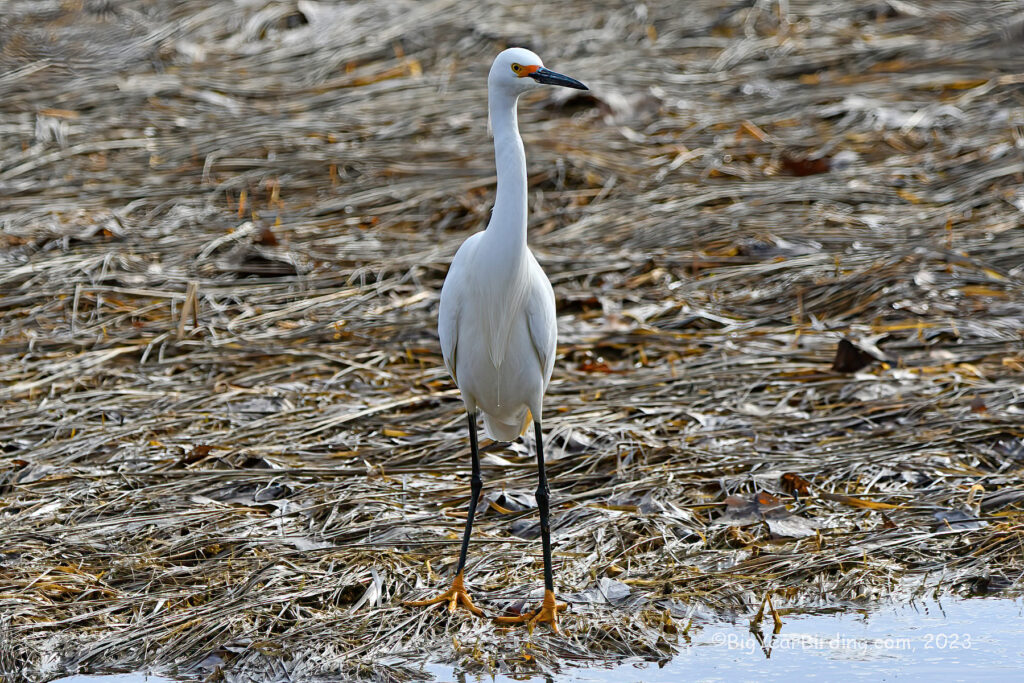
The Snowy Egret (Egretta thula) is a medium-sized heron found in the Americas, from the southern United States to Chile and Argentina. It is a slender bird, measuring around 22-26 inches in length and weighing approximately 0.5-1 pound. Its wingspan can reach up to 39 inches. The Snowy Egret has a distinctive appearance with a white body, black bill, and black legs with bright yellow feet. Its distinguishing feature is the plume of long, wispy feathers on its head and back that can be raised during courtship or aggression displays.

During the breeding season, Snowy Egrets can be found in freshwater or saltwater marshes, ponds, and lagoons. They build nests out of sticks and twigs in trees, bushes, or reeds close to water sources. The Snowy Egret feeds on small fish, crustaceans, and insects that it catches by stalking slowly through the water or standing still and waiting for prey to come close. It uses its long, sharp bill to spear its food.
The Snowy Egret is a migratory bird, with populations in the northern part of its range migrating south to warmer climates in the fall. In the United States, they can be found along the Gulf Coast and in parts of Florida year-round. During the winter, they can be found in Central and South America, with some individuals traveling as far south as Argentina. Snowy Egrets typically return to their breeding grounds in late winter or early spring.

Despite being a common species, the Snowy Egret has faced significant declines in the past due to hunting for its plumes, which were used in the millinery trade. In the early 20th century, the Snowy Egret was nearly hunted to extinction. Conservation efforts have helped to recover populations, and the Snowy Egret is now a protected species under the Migratory Bird Treaty Act. They can be seen in many wildlife refuges and parks throughout their range, providing opportunities for birdwatchers and nature enthusiasts to appreciate their beauty and grace.

